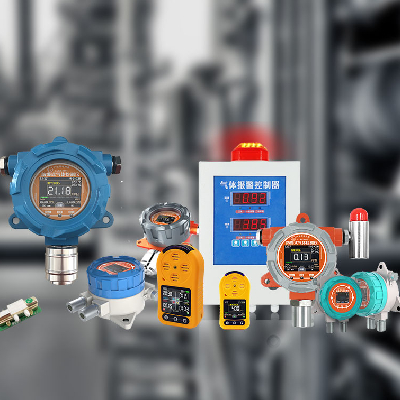Confined spaces, characterized by limited entry or exit points and inadequate ventilation, present significant hazards in industries such as mining, construction, sewage treatment, and manufacturing. These environments can accumulate toxic gases, including carbon monoxide (CO), hydrogen sulfide (H₂S), methane (CH₄), and volatile organic compounds (VOCs), posing life-threatening risks to workers. Traditional gas detection methods often rely on stationary monitors or periodic sampling, which may fail to provide real-time data in dynamic or rapidly changing conditions. To address this critical safety gap, the development of portable gas sensors capable of detecting toxic fumes in confined spaces has emerged as a transformative solution. This article explores the technology, applications, challenges, and future directions of portable gas sensors in enhancing workplace safety.

Technological Advancements in Portable Gas Sensors
Modern portable gas sensors leverage advances in materials science, microelectronics, and artificial intelligence (AI) to achieve high sensitivity, specificity, and reliability. Key technologies include:
- Electrochemical Sensors: These sensors utilize chemical reactions between the target gas and an electrode to generate a measurable electrical current. Electrochemical sensors are highly sensitive to gases like CO and H₂S, making them ideal for detecting low concentrations of toxic fumes.
- Metal Oxide Semiconductor (MOS) Sensors: MOS sensors detect gas concentrations by measuring changes in electrical conductivity caused by gas adsorption on the sensor surface. They are robust and cost-effective, suitable for detecting flammable gases like CH₄.
- Infrared (IR) Sensors: IR sensors identify gases based on their unique absorption spectra. They are non-destructive and can detect multiple gases simultaneously, though they are typically larger and more expensive than other sensor types.
- Nanomaterial-Based Sensors: Advances in nanotechnology have enabled the development of sensors using materials like graphene, carbon nanotubes, and metal-organic frameworks (MOFs). These sensors exhibit exceptional sensitivity, selectivity, and stability, enabling the detection of trace amounts of toxic gases.
Applications in Confined Spaces
Portable gas sensors find extensive applications in confined spaces, including:
- Mining: Underground mines are prone to accumulating gases like methane and carbon monoxide. Portable sensors enable real-time monitoring of gas levels, alerting workers to evacuate when thresholds are exceeded.
- Sewage Treatment: Confined tanks and pipes may harbor hydrogen sulfide and ammonia. Continuous monitoring prevents exposure to these hazardous gases.
- Construction: Tunnels and manholes can trap exhaust fumes from machinery. Portable sensors help identify unsafe conditions before workers enter enclosed areas.
- Manufacturing: Chemical plants and refineries require strict adherence to exposure limits. Sensors integrated into personal protective equipment (PPE) provide workers with immediate hazard alerts.
Challenges and Limitations
Despite significant progress, portable gas sensors face several challenges:
- Cross-Sensitivity: Many sensors exhibit interference from humidity, temperature fluctuations, or non-target gases. Researchers are developing algorithms to distinguish between similar spectral signatures and environmental factors.
- Battery Life: Continuous operation in remote locations demands energy-efficient designs. Emerging technologies like low-power wide area networks (LPWANs) and energy harvesting techniques may extend sensor lifespan.
- Regulatory Compliance: Industry standards such as IECEx and ATEX dictate strict certification processes. Manufacturers must balance innovation with adherence to safety norms.
Integration with IoT and AI
The Internet of Things (IoT) revolution has enabled wireless connectivity for portable sensors. Modern devices transmit data via Bluetooth, LoRaWAN, or cellular networks, allowing:
- Remote Monitoring: Safety managers can track multiple sites from central dashboards.
- Predictive Analytics: AI algorithms analyze historical data to forecast gas buildups, enabling proactive maintenance.
- Worker Tracking: GPS-enabled sensors locate personnel in emergency situations.
Case Studies: Real-World Impact
- Coal Mine Explosion Prevention: A 2021 study deployed electrochemical sensors in Chinese coal mines, reducing gas-related incidents by 40% over three years. Real-time alerts prevented workers from entering hazardous zones.
- Sewage Worker Safety: In New York City, portable H₂S sensors equipped with audible alarms have been credited with a 60% decrease in sewer-related fatalities since 2018.
- Construction Site Compliance: A European consortium integrated IR sensors into hard hats, meeting EN 50110-1 standards for personal protective equipment. Workers received immediate vibrational alerts when gas levels exceeded 10 ppm CO.
Challenges and Future Directions
While portable gas sensors have proven effective, several challenges remain:
- False Alarms: Humidity or dust can trigger erroneous readings. Manufacturers are exploring self-calibrating mechanisms and multi-sensor arrays to improve accuracy.
- Cost Barriers: High-end nanomaterial sensors remain expensive. Scaling production and integrating them into existing PPE could reduce costs.
- Data Privacy: Continuous monitoring raises concerns about worker location tracking. Anonymization techniques and encrypted data transmission can address these issues.
- Standardization: Lack of unified protocols hinders interoperability between different sensor models. Industry groups like the Occupational Safety and Health Administration (OSHA) are working on common frameworks.
Emerging Trends
- Wearable Technology: Flexible sensors integrated into clothing or watches could provide unobtrusive protection.
- AI-Driven Alerts: Machine learning models may soon predict gas diffusion patterns, enabling early warnings.
- Quantum Sensing: Quantum cascade lasers and superconducting sensors offer unprecedented sensitivity, though they are still in experimental stages.
- Global Standards: The International Organization for Standardization (ISO) is developing guidelines for sensor calibration and certification.
Conclusion
Portable gas sensors represent a paradigm shift in workplace safety, moving from reactive to proactive risk management. By integrating advanced materials, IoT connectivity, and AI analytics, these devices empower workers to make informed decisions in real-time. As technology continues to evolve, we can expect:
- Wider Adoption: Cost reductions and regulatory alignment will drive broader implementation across industries.
- Enhanced Functionality: Future sensors may include multi-gas detection, environmental sensing (e.g., temperature), and emergency communication features.
- Global Collaboration: International cooperation on standards will accelerate technological convergence.
In conclusion, the development of portable gas sensors for confined spaces marks a significant leap in occupational safety. By addressing current limitations and embracing emerging trends, these devices will play a pivotal role in protecting lives and preventing tragedies like the Sago Mine disaster or the Upper Big Branch Mine accident. As technology matures, portable gas sensors will become an indispensable component of modern safety protocols, ensuring workers return home safely each day.